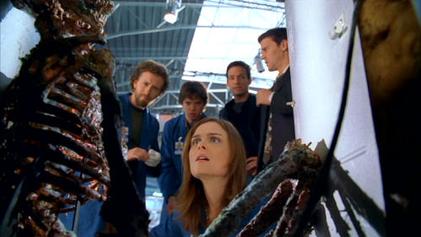- Here’s a 2007 interview with Tim Woodward, founder of Skin Two magazine, in which he talks about Operation Spanner among other topics.
- I’ve often commented on the use of eroticism within propaganda, and I found a prime example in the Honest Erotica page on Austrian artist Gottfried Sieben. After traveling through Eastern Europe, at the time dominated by the Austro-Hungarian empire and threatened by the Turkish empire, he self-published illustration portfolios showing fez-wearing Turkish soldiers capturing and raping shapely, nude white women.
- The Loose sex history podcast has a great episode on brothel culture in the Storeyville district of New Orleans at the turn of the century. Inspired by the recent world’s fair, sex workers leaned heavily into performing the sexual stereotypes of nations of the world, and certain sexual kinks were coded into certain nations. E.g. “French” women provided oral, and the supposedly savage “Viennese” (i.e. German) women would eat raw meat or make a fake cow out of cloth and tear it to shreds before onlookers.
- It looks like COVID-19 will be an issue for another year, at least, and that affects the kink culture like everything else. In Germany, a Berlin bondage club and erotic massage club, Quälgeist (“Tormenting Spirit”) won a court case to reopen. However, the court decided that both customers and employees must keep their faces covered. The state-sanctioned brothels, by comparison, must stay closed, as BDSM sex work is deemed safer than other forms of sex. (New York Daily News, Irish Times)
- London After Dark was a 1954 British paperback written by Robert Fabian, who worked as a police constable and detective. His book included a chapter titled “The Problem of Perverts” which described a sex worker known as “Red Katy” who specialized in humiliating male clients. “They pay her hundreds of pounds per week, to the accompaniment of a stream of vituperation and abuse from her—and they like it!” Fabian also described the “queer” districts where men posted personals like “Female impersonator (amateur) wants instruction in escapology,” and claimed that sadistic men would invariably escalate to the murder of children.
- Vice looks into the history of leather chaps as fashion and fetish. They began as a practical item to protect horse riders from heavy bushes, and were linked to the swaggering outlaw machismo of bikers in the 1950s, and therefore to gay men. This eventually led to Christina Aguilera’s leather chaps in her infamous 2002 “Dirrty” video.
Bones S10E03, “The Purging of the Pundit”, aired October 9, 2014 IMDB
Unlike in the previous Bones episode, “The Girl in the Fridge”, BDSM is closely integrated into both the mystery and Booth’s character arc in “The Purging of the Pundit”.
Forensic procedurals are all about the puzzle, and in this case the victim’s masochism provides the puzzle. The body of a right-wing media figure, “Hutch” Whitehouse, is found partially consumed by animals. His corpse shows signs of being bound and tortured, including repeatedly struck in the testicles, but it also appears to be consensual.
Fuentes: “It’s like he was enjoying being murdered.”

Bones S01E08 “The Girl in the Fridge”, aired November 29, 2005 IMDB
Bones is another forensic investigation procedural TV series.
The case begins with the discovery of a decayed skeleton in an abandoned refrigerator. The forensic anthropologists determine that the deceased is a missing young woman, Maggie Schilling, who was held for ransom, but then the kidnappers broke off communication. She also had a condition that made her bones brittle, particularly stress fractures in her wrists.
The series’ protagonist, Dr. Temperance Brennan, says:
“She did fight, Michael. They kept her tied up like an animal. But she fought. That’s how she got those stress fractures, because she was bound and struggling.”

Eurotrip is a 2004 teen comedy.
Eurotrip is a very parochial movie, with the American teens treating Europe as if it is a terrifying land of threatening depravity. The plot itself is premised on heterosexual gay panic: the protagonist doesn’t realize that he has become email pals with a German girl and thinks a man is propositioning him. When he realizes his mistake, he goes on a trip with some friends across Europe to find his love and make amends.
Much of the comedy is the characters attempting and failing to enjoy European pleasures supposedly forbidden in puritanical America. (Two of the “vices”, cannabis and absinthe, are now mostly legal in the USA.)

Family Guy, episode S02E14 “Let’s go to the hop”, aired June 6, 2000. IMDB
This is the episode of Family Guy with the infamous “your safeword is banana” scene.
The town of Quahog goes into a moral panic about teenagers licking psychedelic toads. Lois and Peter discover a toad in the laundry, and their daughter Meg confesses to holding it to curry favor with the popular kids.
That night in their bedroom, Peter and Lois talk about their fears regarding their kids while putting on fetish wear. Peter says he will talk to the school principal.
Peter’s “plan” is to infiltrate the school as a student, “Lando Griffin.” He solves the toad-licking problem with a musical number, and blunders into becoming the most popular guy in school. Most of the rest of the episode is Peter’s conflict between chasing highschool popularity and looking after Meg. The real underlying problem is the highschool social hierarchy, and the toads are just a symptom.
Perhaps inadvertently, Family Guy provided one of the most non-judgmental depictions of BDSM in mainstream media. Peter and Lois’ conversation about their kids and drugs is played straight. It’s the kind of thing a married couple with teenagers would talk about while getting ready for a scene. It’s just something they do together for fun.
You could interpret this scene to say that Peter and Lois are hypocrites for their panic over drugs while they indulge in kink, but that only works if you view kink as a problem. Showing them smoking a joint together would be a more pointed critique, but might not be allowed on television.
CSI:NY S01E16 “Hush”, aired February 23, 2005 IMDB
Yet another dead naked woman in bondage. CSIs Aiden and Danny investigate.
It turns out that the deceased was strapped to a device on the front of a speeding pickup truck, House of Gord-style. The truck collided with a tree, killing her.
An abandoned truck found nearby has a strange device mounted on the front, which includes a label saying, “Place Shoulders Here”. This includes a device with a red button. The truck contains a bag with a latex bodysuit, a ball gag with teeth impressions, and straps.
Aiden: “Pulp Fiction. Nice.”

Welcome toElust 132-
~ This Month’s Top Three Posts ~
Bisexuality, Shame and The Kiss That Never Wa
I’m Not A Very Good Masturbator
The only place where the smartest and hottest sex bloggers are featured under one roof every month. Whether you’re looking for sex journalism, erotic writing, relationship advice or kinky discussions it’ll be here at Elust. Want to be included in Elust #133? Start with the rules, come back August 1st to submit something and subscribe to the RSS feed for updates!
~ Featured Posts by our Guest Editor ~
Lillith Avir
Sex is great, but…
Free from Section 28
All blogs that have a submission in this edition must re-post this digest from tip-to-toe on their blogs within 7 days. Re-posting the photo is optional and the use of the “read more…” tag is allowable after this point. Thank you, and enjoy!
Books and Movies
Erotic Non-Fiction
Sissy Facefuck
Sextreme Sport – The Ride
Your best teacher is your last mistake
Thoughts & Advice on Sex & Relationships
What happens in Vegas…
The everyday misogyny you don’t see
Green Eyed Monster
Erotic Fiction
A Second Call
Following Instructions
Thoughts and Advice on Kink & Fetish
Episode S05E01 “Carly Summers”, aired November 1, 2007 IMDB
Nip/Tuck is a drama series focused on a pair of cosmetic surgeons. In the season 5 opener, Doctor Sean McNamara and Doctor Christian Troy have just relocated from Miami to Los Angeles and opened a new practice.
One of their first clients is Bob Easton, a high-powered studio exec. He wants them to cover up the bite marks on his chest.

- In Psychology Today, Elyssa Rice talked about the misunderstanding and poor treatment of kinky people by the mental health community.
- Leather titleholder Ali Mushtaq writes about his experience of racism in the leather community, especially in the time of the 2020 Black Lives Matter movement. “…I thought it would be hypocritical if I wasn’t at least, somewhat reflective of what I was wearing at the current moment. After all, I thought to myself, ‘it’s not like I wanted to be a police officer….'”
- The new Fifty Shades is a movie on Netflix called 365 Days, and a singer named Duffy has already asked Netflix to remove it on the grounds that it glamorizes sexual violence.
- Daily Dot discusses the history and future of public sex, which has a different relevance for queer people. Queer sex was banned from the domestic sphere, forcing queer people to meet in public or semi-public places for sexual encounters. Gay assimilation and urban gentrification have squeezed public sex out, and the very ideas of “public” and “private” space are under pressure from encroaching surveillance technology.
- There’s a new documentary about kinky photographer Helmut Newton.
- While not about kink, the CBC Ideas podcast on Leonardo daVinci’s celibacy is a good example of how sexuality in other cultures is very different. To say “Leonardo was homosexual” is meaningless because he lived in a time when modern definitions like “gay” and “straight” were meaningless.
My first online presentation will be at 6:30 PM (Pacific), on Tuesday, July 21st, 2020. This is under the auspices of the organization I helped found, Metro Vancouver Kink.
The history of consensual sadomasochism is full of fascinating characters, strange transformations, and unlikely connections. Come to learn about the fertility rites of ancient Rome, the Catholic Church’s ban on flagellation, the Victorian gentleman who kept his maid as a willing slave, and the retired Marine who was outed as a kinkster on the eve of the Iraq war.
Join Zoom Meeting
https://us02web.zoom.us/j/82670701414
Meeting ID: 826 7070 1414
